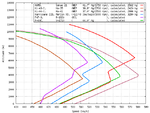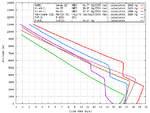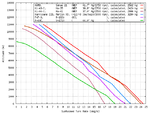syscom3
Pacific Historian
I am using generic "names" rather than specific models for these aircraft, so as to include all of the models that WERE IN QUANTITY AND IN THEATER at any time from Nov 1941 to Dec 1942. I also consider the C-B-I to be part of the larger PTO. I am also omitting the clearly inferior types, as anyone who considers the "Buffalo" to be a great airplane is either delusional, simply fooling themselves, or a combination of both.
As for giving the crown to an aircraft for "Best Fighter", it is patently unfair to compare models that were flying at the end of the war with the models that were flying at the beginning. Therefore we have to consider the aircraft that were flying within one of the several several phases of the war.
For the purposes of this poll, consider "Phase 1" to be Nov 1941 and the AVG experiences, culminating with Dec 1942 with the winding down of the Guadalcanal campaign, the changing OOB in Papua and the influx of new types.
I am specifically excluding the P38D E from this poll, as they were only available in limited numbers in Alaska, which was far from the main battle area's of the CBI and SW Pacific.
As for giving the crown to an aircraft for "Best Fighter", it is patently unfair to compare models that were flying at the end of the war with the models that were flying at the beginning. Therefore we have to consider the aircraft that were flying within one of the several several phases of the war.
For the purposes of this poll, consider "Phase 1" to be Nov 1941 and the AVG experiences, culminating with Dec 1942 with the winding down of the Guadalcanal campaign, the changing OOB in Papua and the influx of new types.
I am specifically excluding the P38D E from this poll, as they were only available in limited numbers in Alaska, which was far from the main battle area's of the CBI and SW Pacific.



